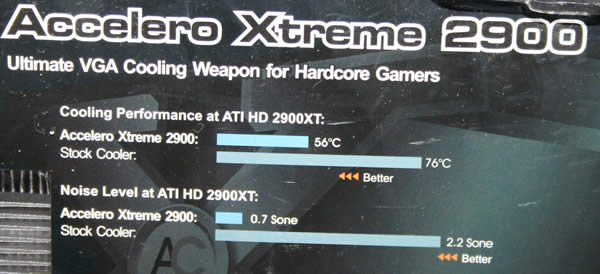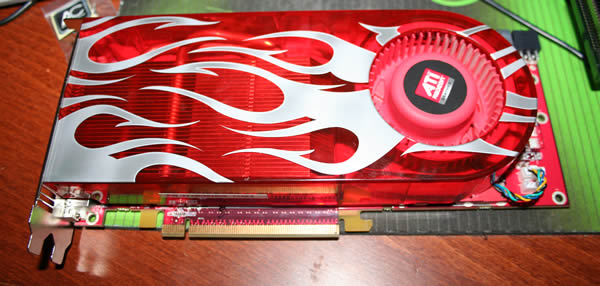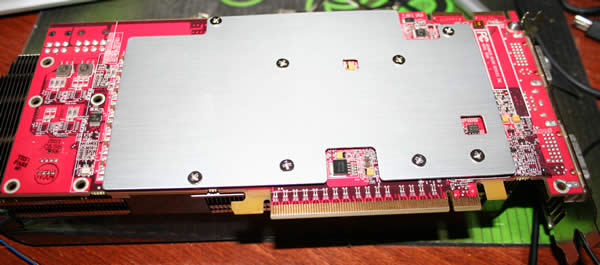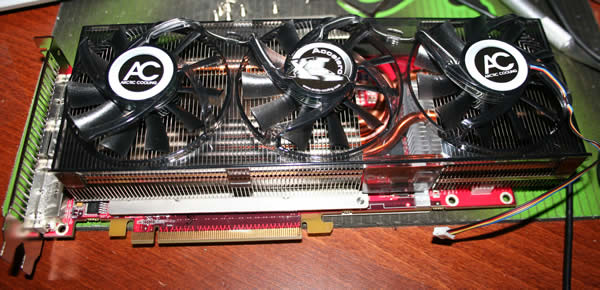The Accelero Xtreme 2900 promises not only to cool the HD2900XT and HD2900 Pro GPU more than 20C lower than the stock cooler but also make the card run much more silent.
INTRODUCTION
One positive result with the release of new graphics cards from AMD and NVIDIA is that older models usually drop in price. AMD’s first DirectX 10 card, the HD2900XT might no longer be the fastest card out there but it still packs a lot of punch. While it works well it has two “faults”: the card runs quite hot and the fan is pretty loud. Arctic Cooling has the solution for this problem. The Accelero Xtreme 2900 promises not only to cool the GPU more than 20C lower than the stock cooler but also make the card run much more silent.
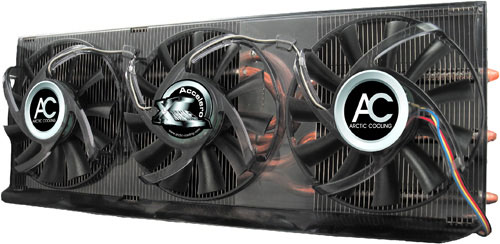
ABOUT ARCTIC COOLING
ARCTIC COOLING is a privately owned company founded in 2001 with headquarters in Switzerland, offices in Hong Kong and the USA and production facilities in Asia. The company creates thermal cooling solutions for personal computer systems that enable CPU (Central Processing Unit), GPU (Graphic Processing Unit) and PC case cooling whilst reducing the noise level.
FEATURES
The features of the cooler are:
- 3 x 80mm PWM Fans
- 5 heatpipes Penetrate 107 Fins
- Optimized air flow
- Patented fan holder eliminates humming noise
- Low noise impeller
- Integrated memory cooling
- Voltage regulator cooling
- Pre-applied MX-2
- Crossfire compatible
- 6 year warranty
It is certainly a well-featured cooler.
Artic Cooling claims it will cool effectively up to 240 Watt heat dissipation and lower the temperature of the GPU at least 20C lower than the stock cooler. It also has memory and voltage regulator cooling meaning it can enhance the cards overclocking potential.
CLOSER LOOK
The cooler comes in a plastic package which fully displays the look of the cooler.
On the back side we find all sort of information about the cooler including specifications and even an image showing off the various parts of the cooler.
Inside the package we find the various parts that make up the cooler.
You get enough pads to put on the memory chips on both sides of the card.
The back side of the cooler This, together with the pads on the memory, will help cool the memory chips on the backside of the card. Here we also see the voltage regulator heatsink.
Here we see the underside of the whole fan assembly. The copper plate that will sit over the GPU already has MX-2 thermal paste on it.
The fan assembly has lots of aluminum fins on it making it larger than the stock cooler while still being much much lighter.
INSTALLATION
The card I am modifying is a reference HD2900XT card from AMD. It has the regular reference cooler that most OEM HD2900XT also has.
The installation isn’t really that hard. First you put on the voltage regulator cooler on its place, then heat pads on the memory and lastly attach the whole fan assembly on the front of the card.
The assembly is then finished by attaching the back plate.
A tip: make sure to attach the power cable to the card before attaching the fan assembly.
I made the mistake to forget that and found that I could not fit it in under the fan assembly after everything was put together. The only solution was to take it apart again.
And here is the final result. Note that this photo was taken before I realized my mistake of not hooking the fan up to the card. The fan actually makes the HD2900XT even longer by sticking out in the back a few centimiters outside the end of the card. This actually meant I had some problems getting the card to fit in my case so make sure you have the room for it before you modify your card.
TEMPERATURE AND NOISE LEVEL
To test the cooler in a real enviroment I put a HD2900XT into my regular system which is installed in a case (my review machine sits outside on the bench to make it easy to switch hardware).
The system:
- HD2900XT with stock cooler and with Accelero Xtreme 2900
- Intel Core2Duo E6400 @ 2.13 GHz
- 2 GB DDR2
- eVGA 680i SLI motherboard
- 2 SATA hard drives
- Thermaltake SwingRS case
Testing conditions:
Idle: I measured the temperature on the GPU with ATITool after sitting at the Windows Desktop for a few hours.
3DMark06: The SM2 and HDR test were run 4 times each in a loop at 1920×1200 4xAA/16xAF and the peak temperature during that run was recorded.
The temperature at the Windows desktop (Idle) drops noticably with the Accelero Xtreme 2900. It’s not 20 degrees but not far off. When pushing the card to its max the result is not as good although we still see a 6 degree drop in temperature. There is a high possibility that I worsened the cooling efficiency when I had to dismantle the whole cooler twice to get the power cable right and thus had to mess with the thermalpaste and the heat pads.
Noise Level
Unfortunately I do not have the profesional equipment to measure the exact noise level of the system with each cooler. Instead I relied on my own ears and sat myself 1 meter from the case with nothing else turned on in the room except the test system. There was a noticable difference in the noise level between these two coolers. While the stock cooler could be heard over the rest of the system, the Accelero Xtreme 2900 could not.
CONCLUSION
A third-party VGA cooler has two tasks to fulfill: it should either cool better than the stock cooler, run much more silent or, in the perfect case, do both. The Arctic Cooling Accelero Xtreme 2900 manages both. Not only does it help cool the HD2900XT (and possibly the HD2900 Pro) but it also makes them run much more silent than with the stock cooler.
While the temperature difference at maximum performance is not as high as Arctic Cooling promises it still is decent and something that probably can be improved by not messing with the thermal paste on the cooler. Just as important though, at least in my view, is that it almost does hit the 20 degree Celsius lower temperature at idle conditions. Considering that your card will not be utilized more than this the majority of the time it is nice to see that the Accelero Xtreme 2900 helps the GPU to run much cooler and possibly increase the lifespan of the GPU. Artic Cooling also makes a similar cooler for the GeForce 8800.
Pros
+ Great cooling, especially when the GPU is running idle
+ Fits both HD2900XT and HD2900 Pro
+ Easy to install
+ Light
Cons
– Power cable for fan is hard to attach after the fan has been installed
– Makes the HD2900XT very long
 Bjorn3D.com Bjorn3d.com – Satisfying Your Daily Tech Cravings Since 1996
Bjorn3D.com Bjorn3d.com – Satisfying Your Daily Tech Cravings Since 1996
